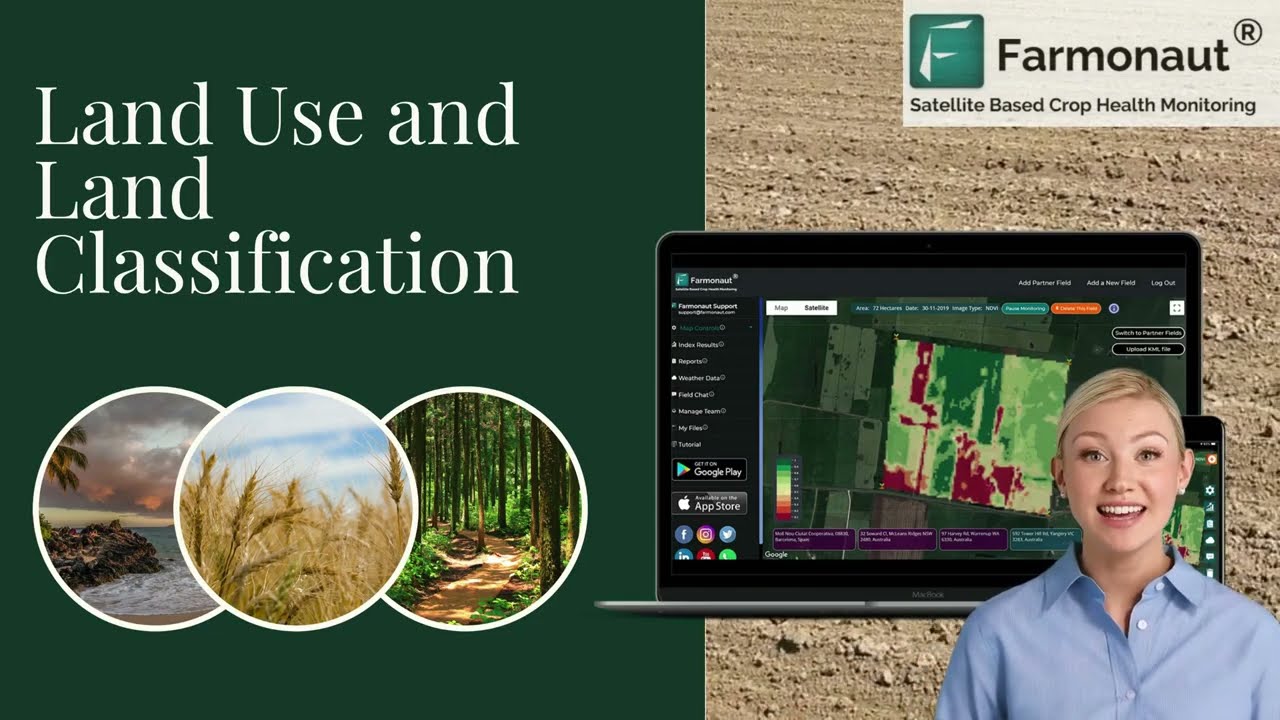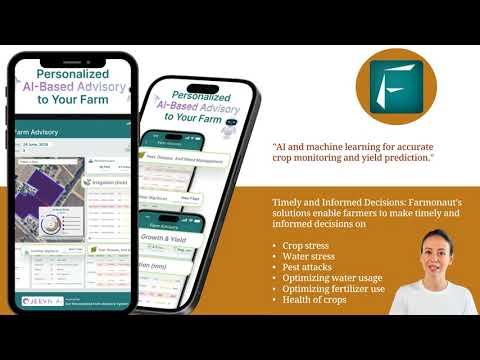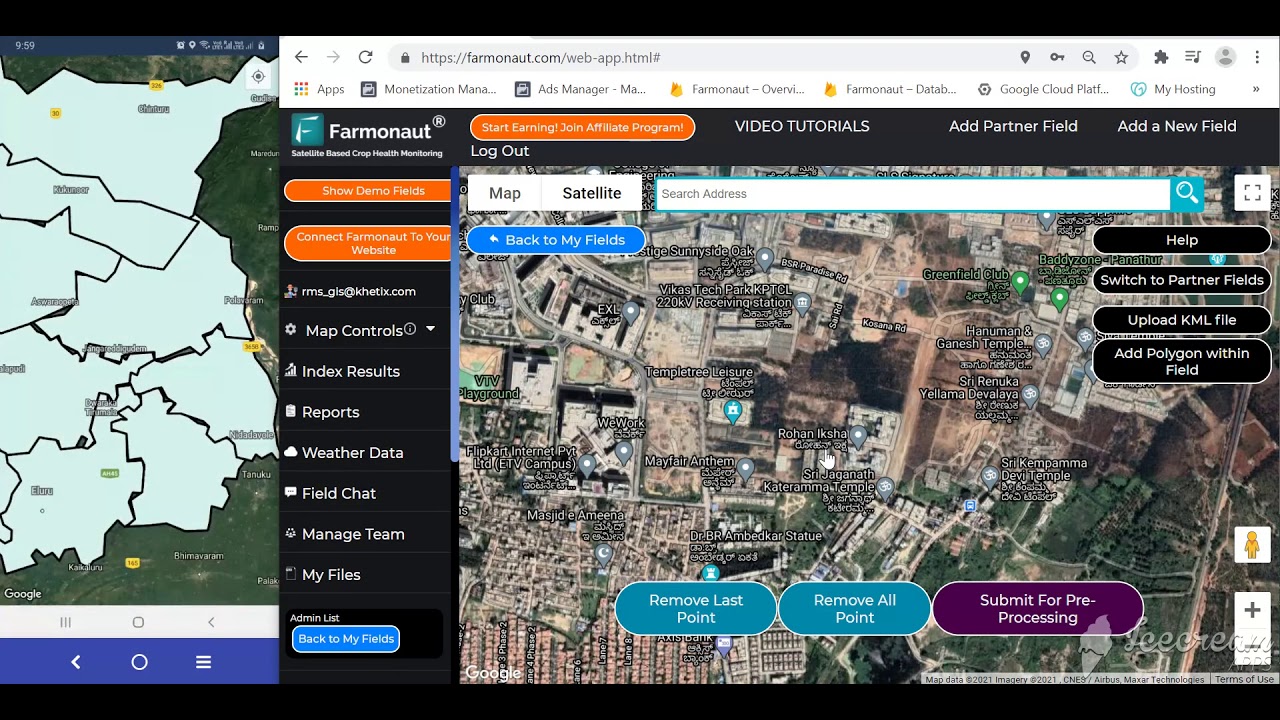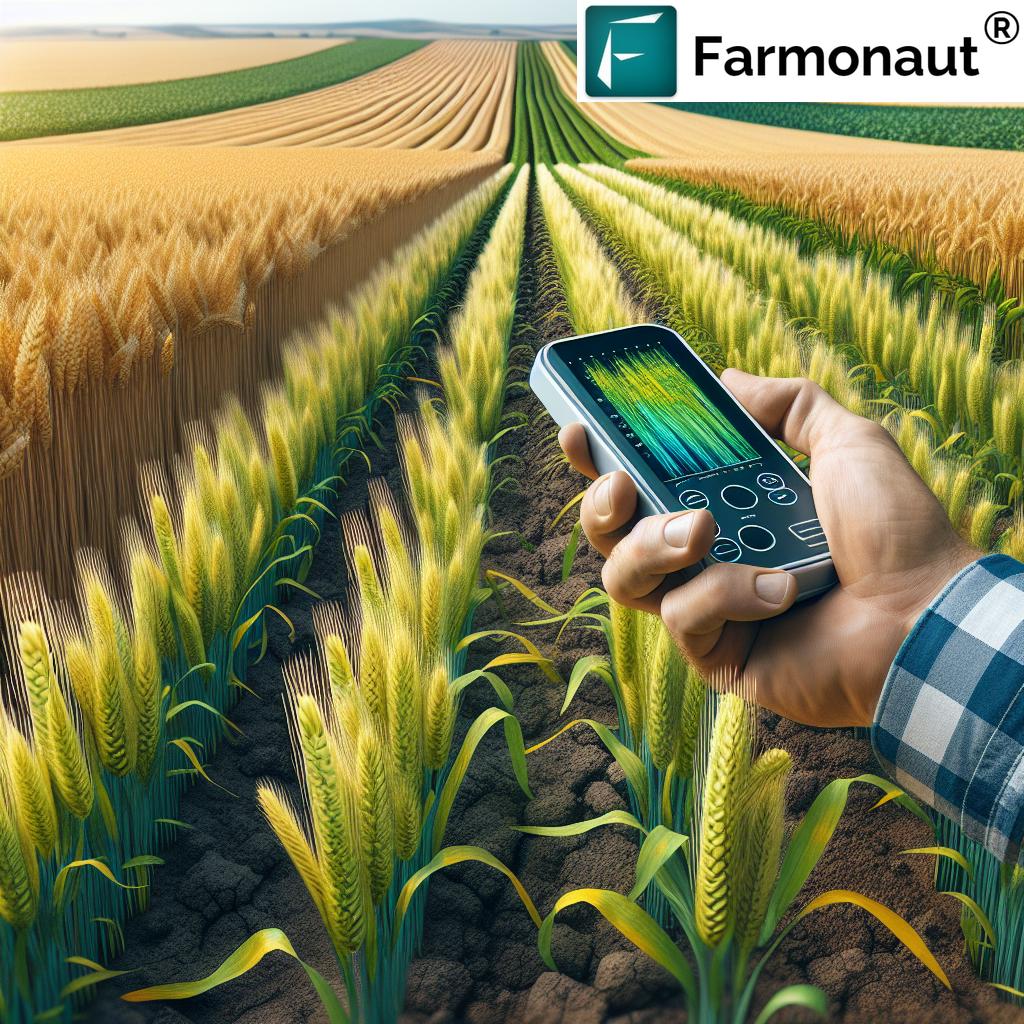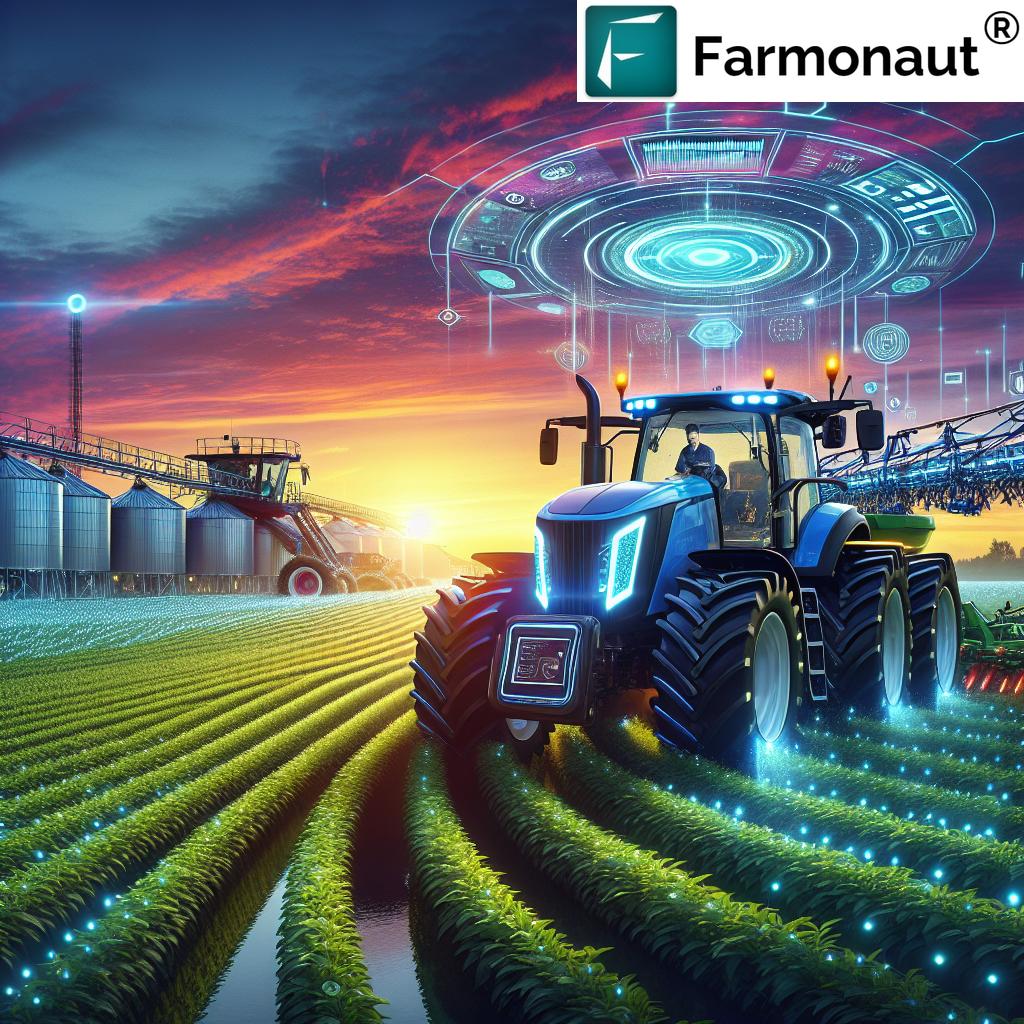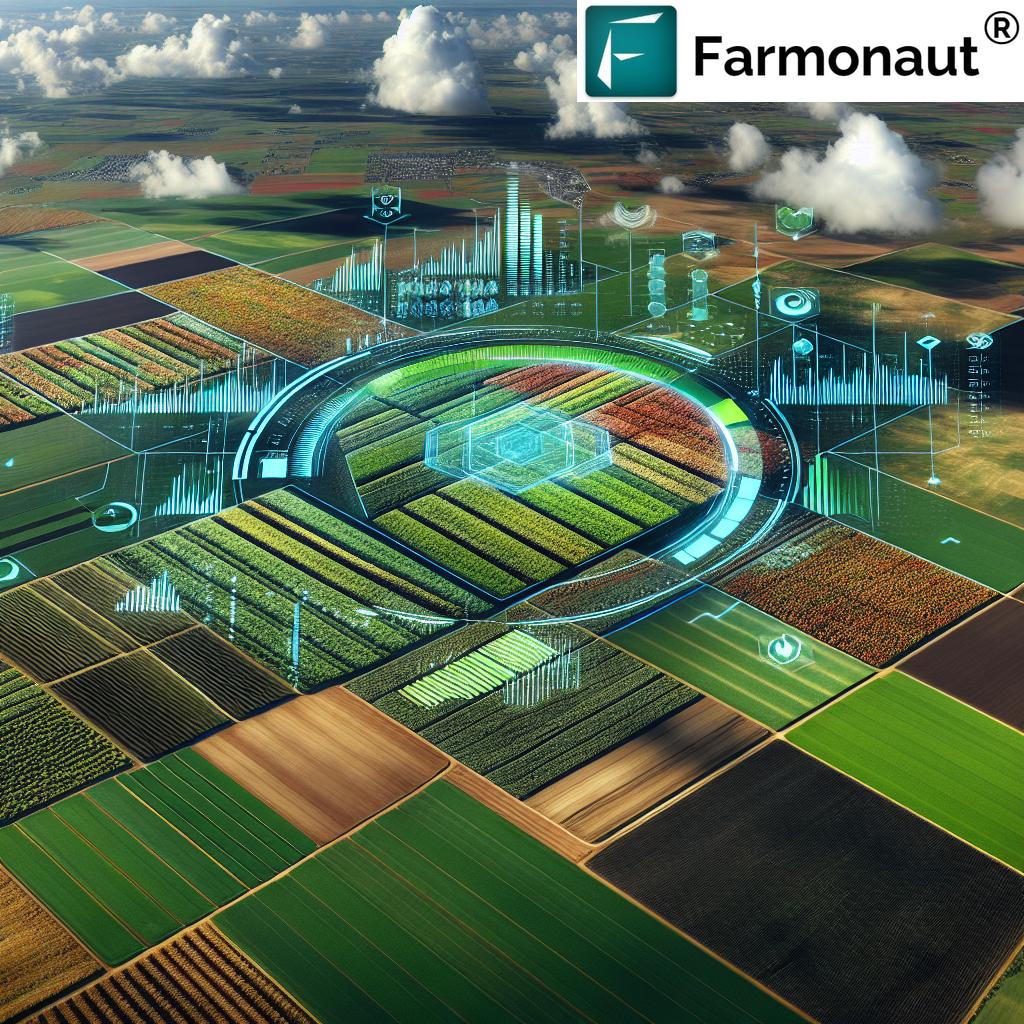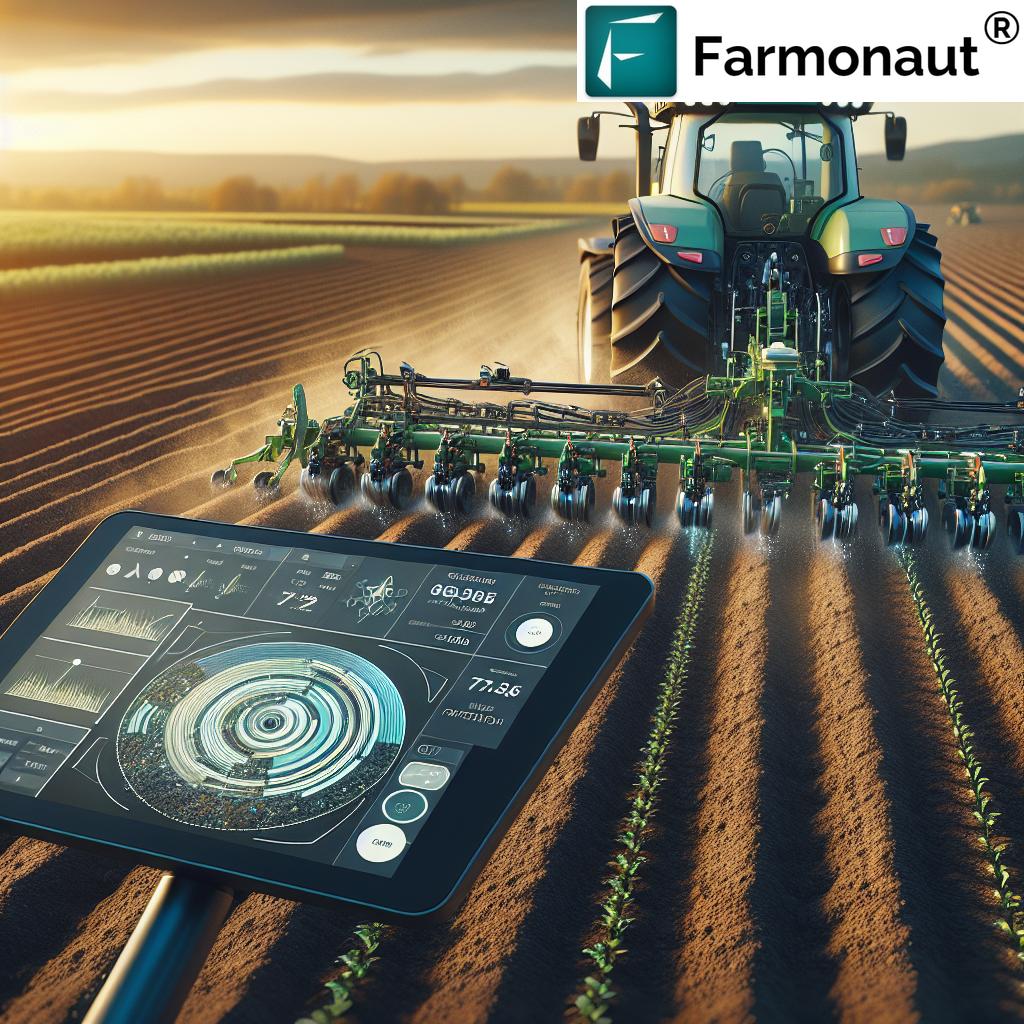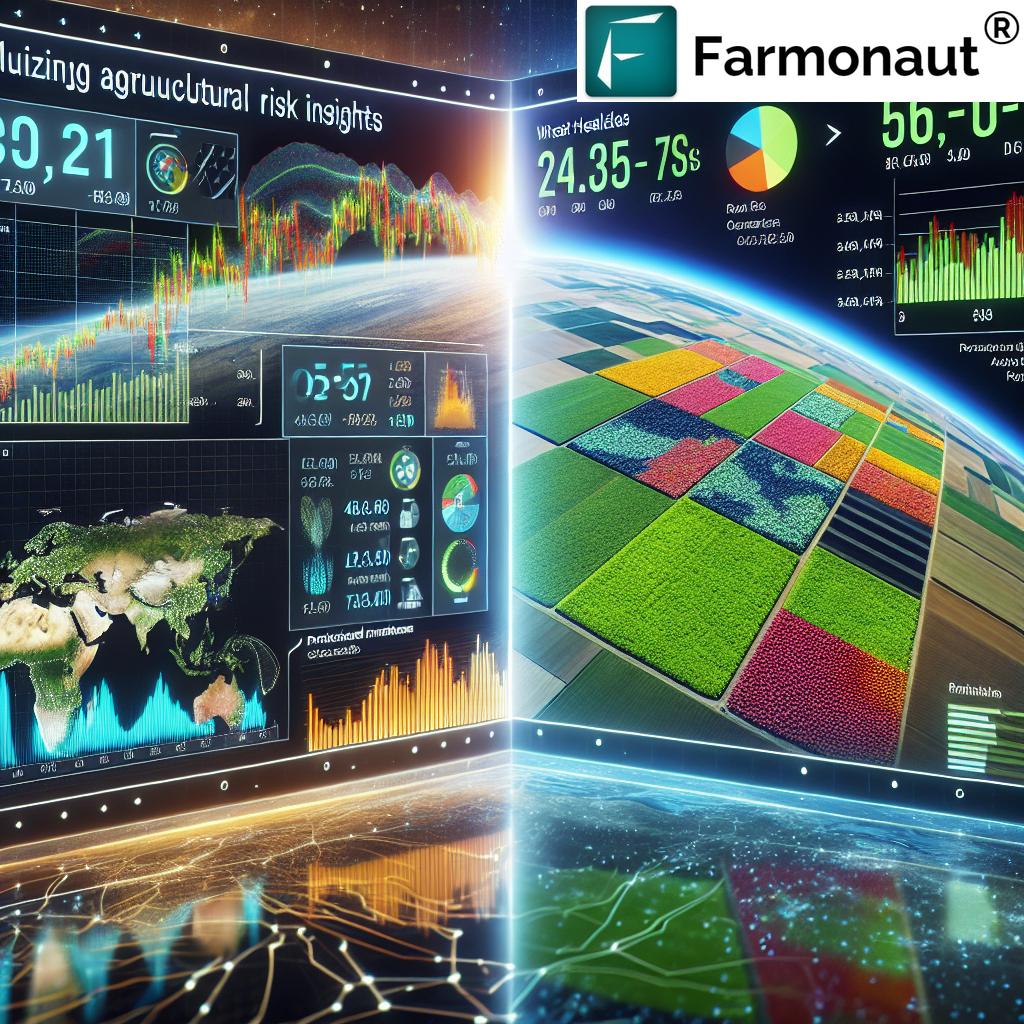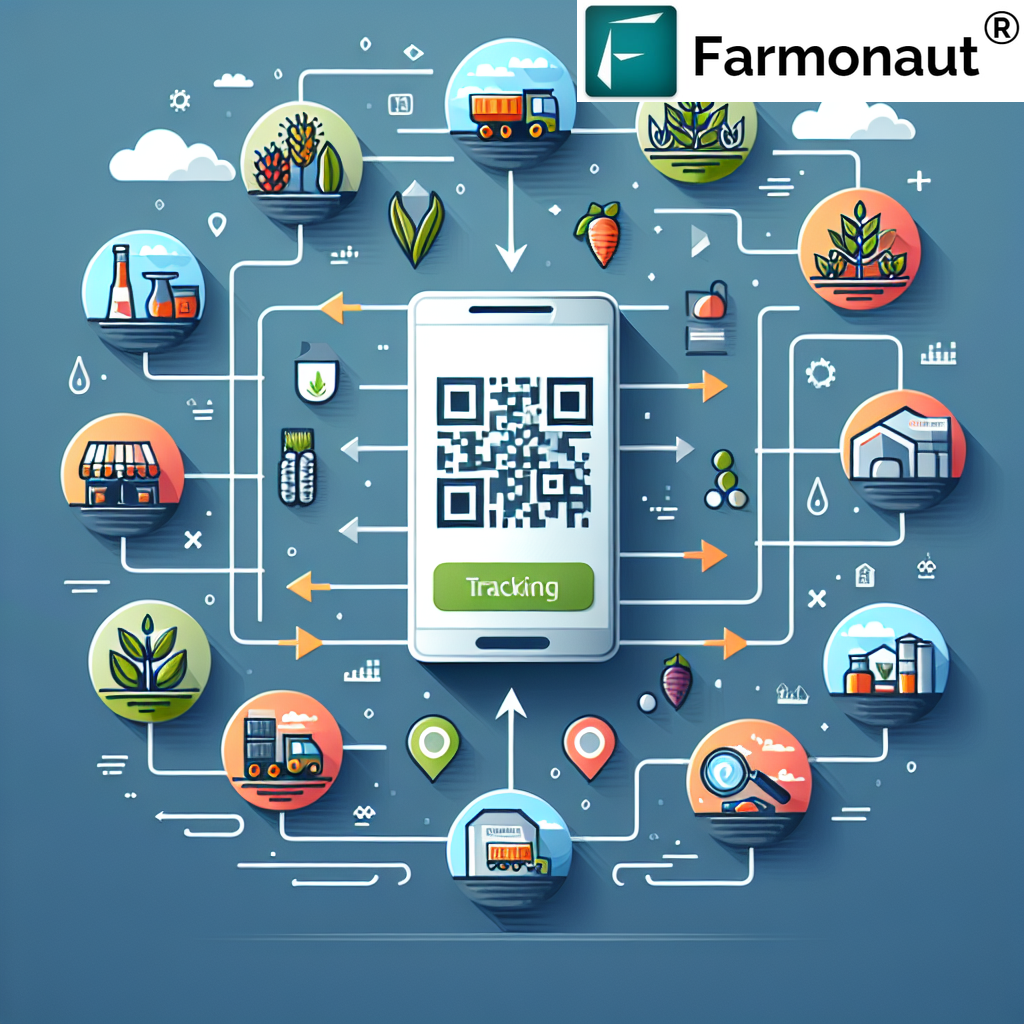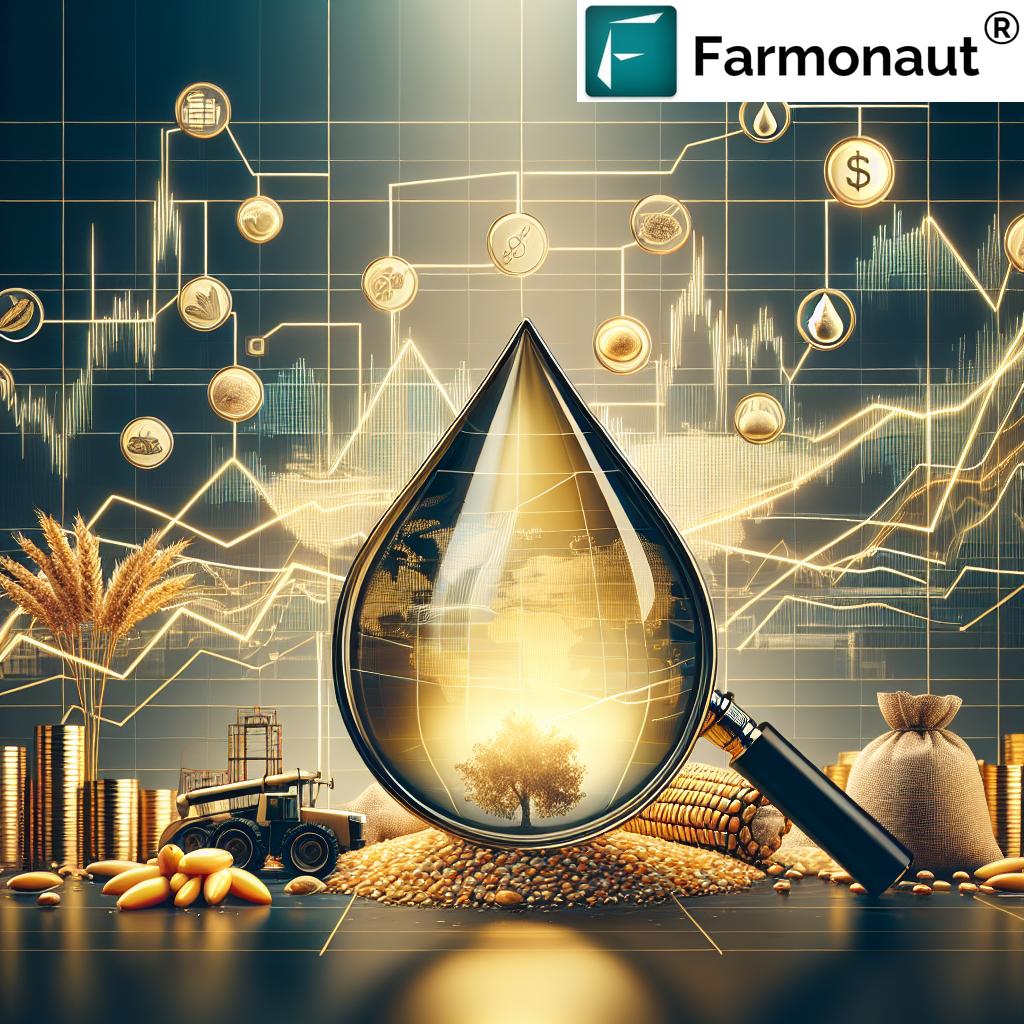Farm Management System: 7 Shocking Tech Upgrades!
“Over 70% of modern farms now use AI-powered management systems for real-time crop monitoring and yield prediction.”
Table of Contents
- Introduction: The Digital Revolution in Agriculture
- Key Components of Farm Management Systems
- The 7 Shocking Farm Management Tech Upgrades
- Comparative Tech Upgrade Impact Table
- Benefits of Implementing FMS in Farming & Forestry
- Technological Integration in Farm Management Systems
- Farmonaut: Satellite-Powered Precision Agriculture Solutions
- Challenges & The Future of FMS
- Frequently Asked Questions
Introduction: The Digital Revolution in Agriculture
In today’s dynamic agricultural environment, farm management systems (FMS) are transforming the landscape of farming and forestry across India and the world. Our journey from traditional practices to advanced digital platforms marks a major turning point—one fueled by integration of cutting-edge technologies like artificial intelligence (AI), the internet of things (IoT), and precision agriculture solutions.
We are experiencing explosive growth in data collection and analytics, enabling farmers and foresters to make smarter, faster, and more sustainable decisions. These transformative technologies empower us to optimize resources, enhance crop health monitoring, streamline planning, and minimize environmental impact.
In this comprehensive guide, we’ll uncover the 7 most shocking tech upgrades in farm management systems and see how platforms like Farmonaut make advanced agriculture accessible for all. Whether you’re a progressive grower, an environmental regulator, or a future-ready agribusiness, this post is your roadmap to the future of sustainable farming practices.
Key Components of Farm Management Systems
Let’s dive into the core components and essential features that define modern farm management systems (FMS). These building blocks, powered by data-driven technologies, streamline every aspect of farm and forestry management.
1. Data Collection and Analysis
- Collecting data from sources like soil sensors, weather stations, and satellite imagery
- Analysis of variables such as soil health, crop growth, and environmental conditions
- Precision agriculture solutions enable rapid, informed decision-making
2. Resource Management
- Monitors and optimizes allocation of water, fertilizers, and pesticides
- Enables resource optimization in agriculture by minimizing waste and maximizing productivity
3. Financial Management
- Tracks expenses, revenues, and budgeting
- Analytics help ensure economic viability and cost-efficiency
4. Inventory Management
- Manages equipment, seeds, fertilizers, and supplies
- Inventory tracking avoids shortages or overstocking
5. Labor Management
- Schedules and tracks tasks and labor performance
- Streamlines payroll, attendance, and workforce efficiency
6. Compliance and Reporting
- Automates regulatory record-keeping and reporting
- Ensures legal adherence and simplifies environmental impact assessment agriculture
“Farm management tech upgrades have boosted resource efficiency by up to 30% in precision agriculture since 2020.”
Farm Management System: 7 Shocking Tech Upgrades!
The agricultural sector is witnessing rapid digitization, and the latest farm management systems (FMS) are at the forefront of this change. We’re now leveraging advanced technologies for remarkable leaps in crop monitoring, resource optimization, and sustainability. Here are the seven innovations shaking up how we approach farming and forestry operations:
- AI-Powered Crop Monitoring
- IoT Sensor Networks in Agriculture
- Satellite Imagery & Data-Driven Insights
- Blockchain-Based Product Traceability
- Automated Resource Allocation Systems
- Advanced Inventory & Fleet Management
- Environmental & Carbon Footprint Tracking
1. AI-Powered Crop Monitoring
AI in farming is revolutionizing how we track and predict crop health. Modern farm management systems utilize AI algorithms and satellite data (like Farmonaut’s NDVI) to scan massive areas instantly. We can now detect early signs of disease, predict yield, recommend input usage, and even automate remedial actions.
- Benefit: Improved crop yields, optimized resource usage, and reduced costs.
- Example: Farmonaut’s Jeevn AI produces real-time, hyperlocal crop advisories for maximum productivity.
2. IoT Sensor Networks in Agriculture
Integrating IoT in agriculture involves deploying soil moisture, weather, and environmental sensors across farm landscapes. These networks provide live data, automating irrigation, detecting anomalies, and reducing costs from over- or under-application of inputs.
- Benefit: Real-time monitoring of soil and climate conditions for precision interventions.
- Example: Integration with platforms like Farmonaut, which combines IoT readings with satellite analytics for actionable insights.
3. Satellite Imagery & Data-Driven Insights
Platforms using satellite-based imagery unleash vast potential by providing frequent, large-area crop monitoring without expensive on-field hardware. Agriculture data analytics from satellites enable us to plan interventions, assess environmental changes, and optimize yield across regions.
- Benefit: Rapid, scalable, and affordable access to critical farm and forest information.
- Example: Farmonaut’s multispectral imagery delivers NDVI maps, soil moisture indices, and vegetation health trends through a browser or mobile app.
4. Blockchain-Based Product Traceability
Ensuring traceability in agriculture fosters transparency and trust. Blockchain integration in FMS records every stage of a product’s lifecycle—from planting to harvest to market—preventing fraud and protecting both farmers and consumers.
- Benefit: Secure supply chains with verifiable records. Valuable for certifications, export, and niche markets.
- Use Case: Farmonaut’s Traceability solution offers scalable, blockchain-based tracking for food, cotton, and other agricultural products.
5. Automated Resource Allocation Systems
Automated resource management assigns inputs such as fertilizers, water, and pesticides precisely where and when needed. By integrating satellite and sensor data, FMS platforms generate dynamic “prescription maps” for field activities.
- Benefit: Minimized input waste, improved cost control, and clearer environmental impact assessment agriculture.
- Use Case: Farmonaut’s advisory and resource management modules allow farmers to track expenses and reduce unnecessary usage.
6. Advanced Inventory & Fleet Management
As farm operations scale, so does the complexity of logistics. Fleet and inventory management modules in modern FMS assign tasks, track equipment, and automate supply ordering to prevent overstocking or downtime in field operations.
- Benefit: Enhanced operational efficiency, optimized fleet usage, and reduced operational costs.
- Use Case: Farmonaut’s Fleet Management System provides real-time oversight for machinery, vehicles, and labor scheduling.
7. Environmental & Carbon Footprint Tracking
The pressure to quantify and reduce environmental impact is greater than ever in global agriculture. Advanced FMS platforms now offer live carbon footprint metrics, promoting sustainability and supporting compliance with climate regulations.
- Benefit: Transparency for sustainability audits, credibility for green certifications, and support for regulatory reporting.
- Use Case: Farmonaut Carbon Footprinting empowers businesses and farmers to measure and minimize carbon emissions based on real-time satellite data analytics.
Comparative Tech Upgrade Impact Table: 7 Farm Management System Tech Upgrades
| Upgrade Name | Description | Estimated Yield Improvement (%) | Estimated Resource Savings (%) | Cost Efficiency (Estimated %) | Sustainability Impact |
|---|---|---|---|---|---|
| AI-Powered Crop Monitoring | Advanced AI analyzes field health, predicts issues, and prescribes interventions | 15–30 | 18–28 | 20–35 | High |
| IoT Sensor Networks | Networks of in-field soil, weather, and crop sensors for real-time monitoring | 10–18 | 20–35 | 15–25 | High |
| Satellite Imagery & Analytics | Remote sensing for crop vigor, growth tracking, and input efficiency | 12–20 | 16–25 | 20–30 | Medium |
| Blockchain Traceability | Immutable record-keeping for product life-cycle from farm to market | 5–10 | 8–15 | 10–20 | High |
| Automated Resource Allocation | Data-driven input application with minimum waste | 8–15 | 25–35 | 25–40 | High |
| Inventory & Fleet Management | Real-time tracking of supplies, machinery, and operational logistics | 7–12 | 14–24 | 18–30 | Medium |
| Environmental/Carbon Footprint Tracking | Live tracking, assessment, and reduction of farm carbon emissions | 4–7 | 10–22 | 15–28 | High |
Benefits of Implementing FMS in Farming & Forestry
The adoption of farm management systems (FMS) is yielding tangible results across agriculture and forestry sectors globally. Let’s summarize the core advantages:
- Cost Savings: Clear reduction in wastage of water, seeds, fertilizers, and pesticides with precision inputs and accurate tracking.
- Increased Productivity: Data-driven insights support superior crop yields and more efficient operations.
- Sustainability: Real-time environmental monitoring encourages sustainable practices and supports environmental impact assessment agriculture.
- Risk Management: Predictive analytics and weather forecasts allow proactive response to threats like pests or adverse weather conditions.
- Regulatory Compliance: Streamlined reporting and pesticide usage records for legal adherence.
- Improved Market Access: Product traceability enhances opportunities for reaching premium and export markets.
- Labor & Inventory Efficiency: Centralized records for equipment, labor, and supplies prevent bottlenecks and reduce reliance on error-prone manual data entry.
Technological Integration in Farm Management Systems
Modern FMS rest on a robust technological foundation, integrating the following advanced technologies to deliver next-level agriculture data analytics and operational excellence:
- Artificial Intelligence (AI): Uncovers patterns from massive data streams; enables predictive insights, yields simulation, and proactive interventions in crop management.
- Internet of Things (IoT): Enables continuous, automated data collection by connecting sensors and smart devices throughout the farm ecosystem.
- Precision Agriculture Techniques: Optimizes the timing, dosage, and distribution of inputs for each field zone, down to the meter scale, based on data analysis.
- Cloud-Based Digital Platforms: Offer centralized access to operational records, historical performance, and team collaboration across devices.
- Mobile and API Access: Farmers, foresters, and agribusinesses can manage their operations from anywhere.
Try Farmonaut’s Web App or integrate satellite/weather API into your ecosystem. For developers, full API documentation is available.
Farmonaut: Satellite-Powered Precision Agriculture Solutions
Among the pioneers in affordable digital farm management systems, Farmonaut stands out for its user-centric, satellite-based precision agriculture solutions. Here’s how Farmonaut is making state-of-the-art agricultural technology accessible to everyone:
Farmonaut’s Technology Stack
- Satellite imagery for crop health monitoring: Receive NDVI, NDWI, and LAI maps, highlighting vegetation health, soil moisture, and growth trends for data-driven planning.
- Agro Admin App for Large-Scale Management: Designed to streamline inventory, team, and field management across thousands of hectares. Ideal for agribusinesses, cooperatives, and government agencies.
- Jeevn AI Advisory: Delivers actionable, AI-powered strategies reflecting the latest satellite data and expert agronomy practices for enhanced productivity and efficiency.
- Blockchain Traceability: Guarantees transparent product journey from the field to the customer, building credibility and market trust.
- Fleet & Resource Management: Tracks vehicle usage, schedule optimization, and cost control for optimized large farm logistics. (Visit Farmonaut Fleet Management for details.)
- Carbon Footprinting: Real-time carbon emissions tracking for compliance and sustainability (Explore Carbon Footprinting).
Business Model & Accessibility
- Subscription-based packages: Tailored for individual farmers, cooperatives, agribusinesses, and governments.
- Accessible via web, mobile apps (Android, iOS), and API. Get started instantly!
- Flexible pricing by monitored area and satellite data refresh rates: Offers scalability for small fields to vast plantations.
- Supports crop loan and insurance verification with satellite reports (See Crop Loan & Insurance).
Who Gains from Farmonaut?
- Farmers
Smaller holdings benefit from affordable, real-time crop monitoring technologies and personalized AI guidance. - Agribusinesses
Large plantations benefit from centralized management, logistics planning, and resource efficiency. - Financial institutions
Insurance, lending, and compliance is secured by reliable, up-to-date satellite verification. - Corporate supply chains
End-to-end traceability protects brands and legitimizes market claims. - Government and NGOs
Satellite-powered oversight for subsidy/program transparency and policy assessment.
Explore Farmonaut’s Crop, Plantation, and Forest Advisory for government and institutional solutions.
Challenges & The Future of FMS
Despite the transformative impact of farm management systems, some hurdles remain:
- Data Management: The deluge of information requires reliable storage, privacy measures, and intuitive dashboards.
- Implementation Costs: Initial investments can challenge smaller growers (satellite-based solutions like Farmonaut help bridge this gap).
- Technical Expertise: Training farmers and teams on digital platforms and advanced analytics is vital for maximizing ROI.
Emerging Future Trends
- Blockchain Integration: Elevate supply chain transparency and compliance for regulators and consumers alike.
- Advanced AI & Machine Learning: Further automation and scenario-based recommendations for risk reduction and increased yield.
- Expanded Connectivity: Roll-out of 5G and low-cost satellite internet for real-time rural data exchange.
- Scalable APIs: Allows businesses and researchers to customize and connect FMS solutions with their internal systems, further extending the ecosystem.
(Try the Farmonaut Satellite & Weather API)
Frequently Asked Questions: Farm Management Systems & Tech Upgrades
1. What is a Farm Management System (FMS)?
A Farm Management System is a comprehensive digital platform that streamlines data collection, planning, resource allocation, inventory, compliance, and reporting for farming and forestry operations. It utilizes tools like satellite imagery, IoT, AI, and cloud services to boost productivity and sustainability.
2. How does AI-powered crop monitoring improve yields?
AI in farming leverages large-scale data analysis to detect stress, nutrient deficiencies, pests, or diseases early—enabling precise, rapid intervention and maximizing yields.
3. Do I need expensive hardware to use satellite crop monitoring?
No. Modern platforms like Farmonaut provide satellite-based crop and forest health indices accessible through web, Android, or iOS apps—no hardware installation needed.
4. What are the cost benefits of using FMS?
Farm management tech upgrades help lower input and operational costs by up to 40% through targeted resource application, waste reduction, and improved planning.
5. How is environmental sustainability measured in agriculture?
Through features like carbon footprint tracking and environmental impact assessment agriculture dashboards, FMS measure inputs, outputs, and emissions, guiding sustainable farming practices.
6. Can large agribusinesses track and optimize vehicle or machinery fleets?
Yes. Solutions like Farmonaut’s Fleet Management module allow detailed oversight and scheduling of all farm machinery and transport logistics.
7. What are the start-up requirements?
Most modern FMS, especially satellite-based solutions, require only basic digital devices and internet access. Training is available to ensure swift adoption.
8. Where can I learn more or get started?
Visit the Farmonaut Web App or download the Android or iOS version to begin your digital agriculture journey.
Conclusion: Embracing Data-Driven Agriculture for a Sustainable Tomorrow
We stand at the threshold of a new era in agriculture and forestry—where farm management systems combine the power of artificial intelligence, IoT in agriculture, satellite imagery, and blockchain to enable remarkable progress. By integrating these advanced technologies, we ensure higher yields, lower costs, greater sustainability, and resilient farm businesses for generations to come.
Whether you manage a single-field farm or coordinate vast plantations and governmental programs, adopting a comprehensive, affordable FMS like Farmonaut is now simpler and more impactful than ever. With real-time data analytics and digital tools, we can confidently navigate the complex challenges of modern agriculture—minimizing environmental impact, optimizing resource usage, and ensuring food security for all.
Ready to transform your agriculture or forestry operation? Experience the future with Farmonaut’s farm management system today!



